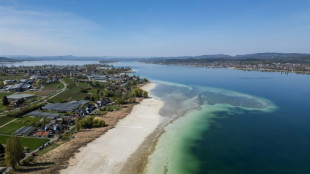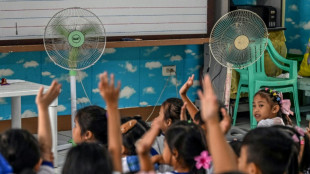
-
 Migrant's expulsion puts Washington Salvadorans on edge
Migrant's expulsion puts Washington Salvadorans on edge
-
Plan for expanded Muslim community triggers hope, fear in Texas

-
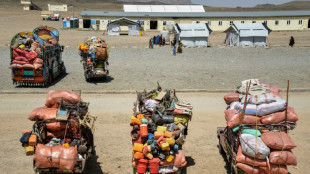 Pakistan foreign minister due in Kabul as deportations rise
Pakistan foreign minister due in Kabul as deportations rise
-
White House touts Covid-19 'lab leak' theory on revamped site

-
 Dodgers star Ohtani skips trip to Texas to await birth of first child
Dodgers star Ohtani skips trip to Texas to await birth of first child
-
US senator says El Salvador staged 'margarita' photo op

-
 Ford 'adjusts' some exports to China due to tariffs
Ford 'adjusts' some exports to China due to tariffs
-
Thomas maintains two-shot lead at RBC Heritage

-
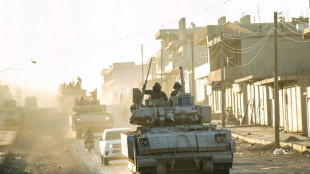 US to withdraw some 1,000 troops from Syria
US to withdraw some 1,000 troops from Syria
-
Four killed after spring storms wreak havoc in the Alps
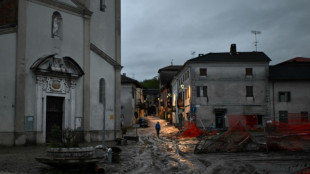
-
 Spurs' Popovich reportedly home and well after 'medical incident'
Spurs' Popovich reportedly home and well after 'medical incident'
-
Trump goes to war with the Fed

-
 Celtics chase second straight NBA title in playoff field led by Thunder, Cavs
Celtics chase second straight NBA title in playoff field led by Thunder, Cavs
-
White House site blames China for Covid-19 'lab leak'

-
 Norris edges Piastri as McLaren top Jeddah practice
Norris edges Piastri as McLaren top Jeddah practice
-
Trump warns US could ditch Ukraine talks if no progress

-
 Judge denies Sean 'Diddy' Combs push to delay trial
Judge denies Sean 'Diddy' Combs push to delay trial
-
80 killed in deadliest US attack on Yemen, Huthis say
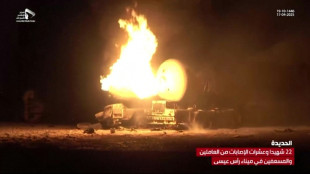
-
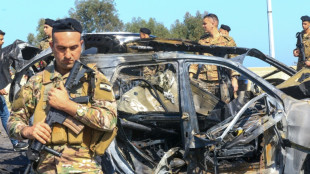 Lebanon says two killed in Israeli strikes in south
Lebanon says two killed in Israeli strikes in south
-
Trump says US will soon 'take a pass' if no Ukraine deal

-
 F1 success is 'like cooking' - Ferrari head chef Vasseur
F1 success is 'like cooking' - Ferrari head chef Vasseur
-
Cycling mulls slowing bikes to make road racing safer
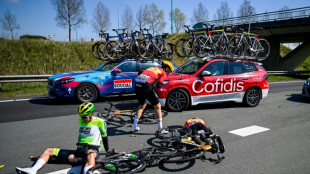
-
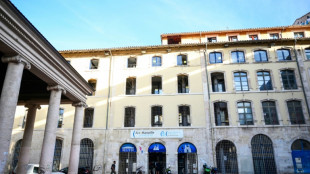 Macron invites foreign researchers to 'choose France'
Macron invites foreign researchers to 'choose France'
-
Klopp 'happy' in new job despite Real Madrid rumours: agent

-
 Alcaraz into Barcelona semis as defending champion Ruud exits
Alcaraz into Barcelona semis as defending champion Ruud exits
-
Vance meets Italy's Meloni before Easter at the Vatican

-
 Evenepoel returns with victory in Brabantse Pijl
Evenepoel returns with victory in Brabantse Pijl
-
Maresca confident he will survive Chelsea slump

-
 Mob beats to death man from persecuted Pakistan minority
Mob beats to death man from persecuted Pakistan minority
-
Lebanon says one killed in Israeli strike near Sidon
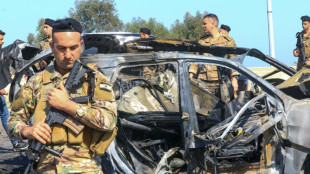
-
 Arsenal's Havertz could return for Champions League final
Arsenal's Havertz could return for Champions League final
-
US officials split on Ukraine truce prospects
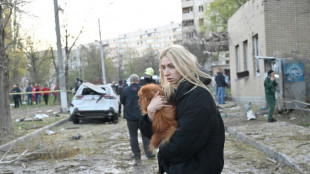
-
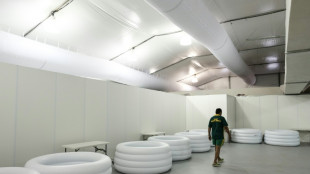 Client brain-dead after Paris cryotherapy session goes wrong
Client brain-dead after Paris cryotherapy session goes wrong
-
Flick demands answers from La Liga for 'joke' schedule

-
 'Maddest game' sums up Man Utd career for Maguire
'Maddest game' sums up Man Utd career for Maguire
-
Trial opens for students, journalists over Istanbul protests

-
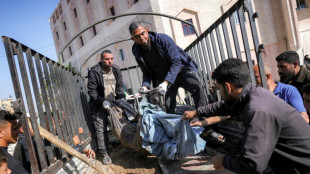 Gaza rescuers say Israeli strikes kill 24 after Hamas rejects truce proposal
Gaza rescuers say Israeli strikes kill 24 after Hamas rejects truce proposal
-
'Really stuck': Ukraine's EU accession drive stumbles

-
 'Not the time to discuss future', says Alonso amid Real Madrid links
'Not the time to discuss future', says Alonso amid Real Madrid links
-
74 killed in deadliest US attack on Yemen, Huthis say
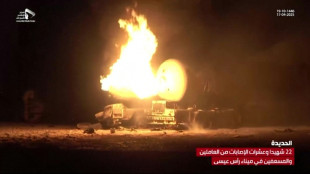
-
 Southgate's ex-assistant Holland fired by Japan's Yokohama
Southgate's ex-assistant Holland fired by Japan's Yokohama
-
Vance meets Meloni in Rome before Easter at the Vatican

-
 Ryan Gosling to star in new 'Star Wars' film
Ryan Gosling to star in new 'Star Wars' film
-
Hamas calls for pressure to end Israel's aid block on Gaza
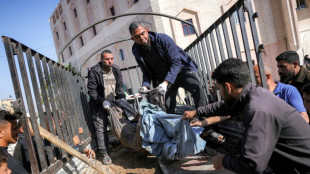
-
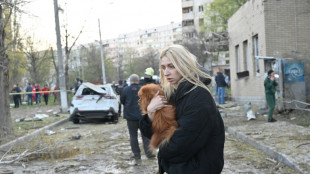 Russia says Ukraine energy truce over, US mulls peace talks exit
Russia says Ukraine energy truce over, US mulls peace talks exit
-
58 killed in deadliest US strike on Yemen, Huthis say

-
 Museums rethink how the Holocaust should be shown
Museums rethink how the Holocaust should be shown
-
Three dead after deadly spring storm wreaks havoc in the Alps
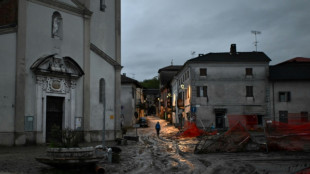
-
 No need for big changes at Liverpool, says Slot
No need for big changes at Liverpool, says Slot
-
Bloody Philippine passion play sees final performance of veteran 'Jesus'


In poor areas of Peru's capital, running water is a dream
In the bone-dry hills overlooking Lima, the luxury of running water is just a dream for thousands of Peruvians who get theirs delivered by tanker truck.
Peru's capital, home to more than 10 million people, is also the world's second largest city located in a desert, after Cairo.
It has the Pacific Ocean on one side, the Andes on the other and three rivers running through it, plus a water table. But rain is scarce.
More than 635,000 people in Lima lack running water, says the National Institute of Statistics and Computer Science, and many of them live in informal settlements high above the city, in spots not reached by the water and sewer lines.
Blue tanker trucks bring water for free once a week, sometimes less, to parts of San Juan de Miraflores south of the city, and leave it in large drums placed along its dusty streets.
And these containers are anything but hygienic.
"We get stomach cramps and migraines. There are worms in the bottom of the tank," said Catalina Naupa, a 59-year-old resident of San Juan de Miraflores.
In winter sometimes the trucks do not come at all because the streets become so muddy they are unnavigable, said Naupa, who washes her clothes only once a week or even every two weeks to conserve water.
Nicolas Reyes, who works for the city's water utility Sedapal, says it brings in a cubic meter (260 gallons) of water per family per week.
That comes out to about 30 liters (eight gallons) of water per person each day -- far short of the minimum 50-100 liters that the United Nations says people should have access to.
Year after year, Sedapal fears having to ration water as the rainy season comes and it hopes Peru's reservoirs fill, said Jeremy Robert of the Institute for Development Research, in France.
- 'Another world'-
"Climate change is going to affect water levels in the mountains and reduce the flow of rivers," said Antonio Ioris, a professor of geography at Cardiff University in Wales.
But he said dwindling water reserves are not the main problem, insisting that poor people's tenuous access to water is very low on policymakers' list of priorities.
"The situation on the outskirts of Lima stems not only from a lack of urban planning but also from problems in rural areas that force people to migrate to the city," said Ioris, who specializes in the link between population and environmental issues in Latin America.
Along dirt roads in some areas of San Juan de Miraflores, concrete staircases lead to spots that are even harder to access and cannot be reached by the trucks that bring in water.
So these people get by the best they can, and on average pay six times what people connected to the utility grid pay for water, the government says.
In one hilltop area of San Juan de Miraflores, a water drum blocks the last step of a staircase heading up toward another world.
Up on the peak, a two-meter high, 10-kilometer long (two-yard high, six-mile long) concrete barrier -- people call it the "wall of shame" -- separates San Juan de Miraflores from a rich area on the other side. The idea is to keep poor people out.
Through cracks in the wall one can see the lush vegetation of Santiago de Surco, a Lima neighborhood with one of the highest rates of water consumption -- 200 liters per day per person, according to Sedapal.
There on the other side, thick green grass is fed with drinking water and people rest under leafy trees.
"Surco seems like another world," said Cristel Mejia, who runs a soup kitchen on the poor side of the wall.
T.Zimmermann--VB

